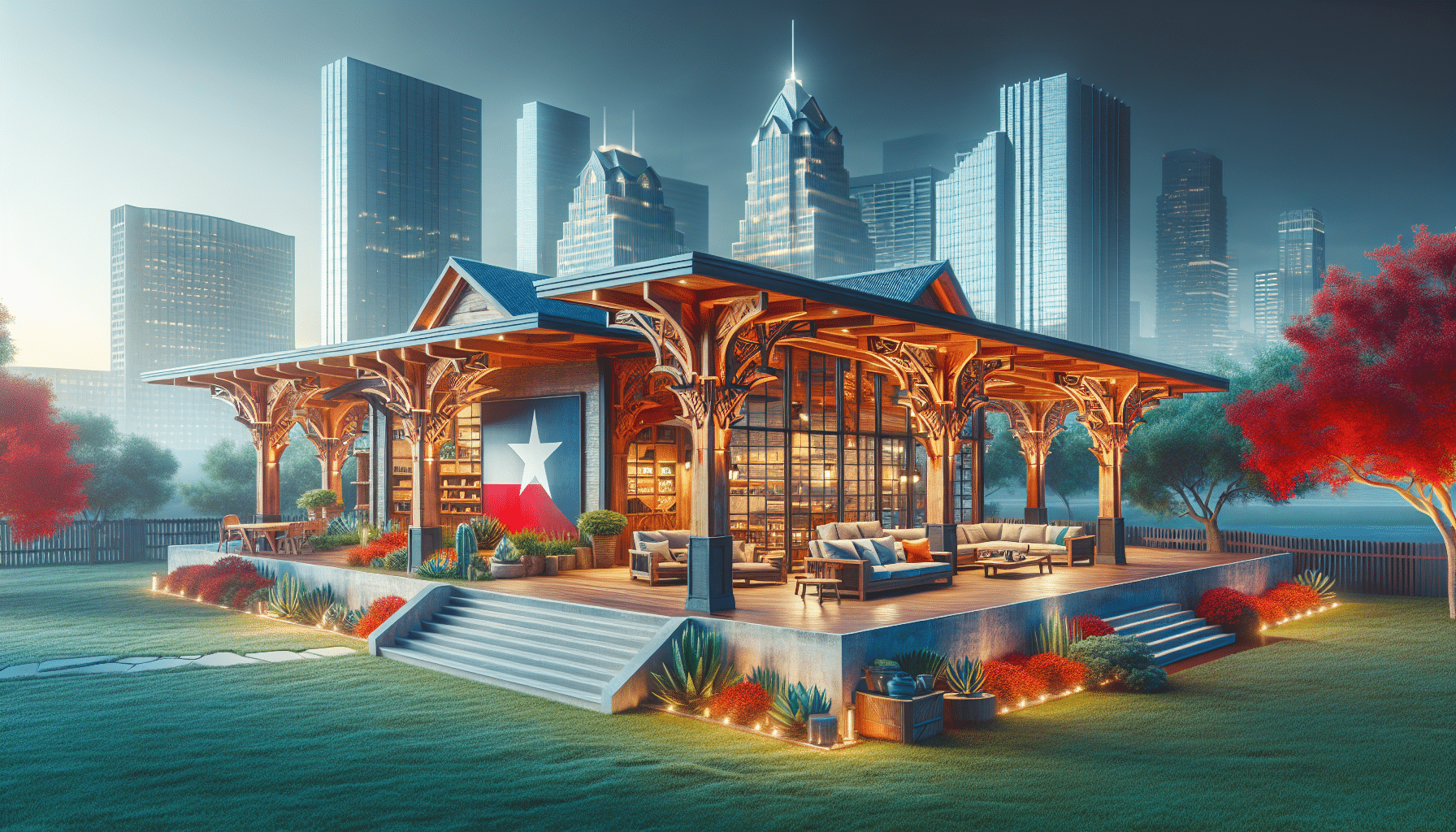At Dallas Pergola Company, we know that homeowners are always looking for ways to enhance their outdoor spaces. One fascinating way to do so is by understanding the history and beauty of pavilions, from ancient times to the modern era. This blog post will take you on a journey through some of the world’s most fascinating pavilions. Homeowners will not only learn about these architectural wonders but also get inspired to create their own backyard oasis.
Contents
- 1 The Origins of Pavilions: A Step Back in Time
- 2 The Beauty of Persian Pavilions
- 3 Japanese Tea House Pavilions
- 4 Modern Marvels: Pavilions of the 21st Century
- 5 Famous Pavilions Around the World
- 6 Incorporating Pavilions into Your Outdoor Space
- 7 Choosing the Right Materials
- 8 Customizing Your Pavilion
- 9 The Role of Landscaping
- 10 Merging Tradition with Modernity
- 11 Conclusion
The Origins of Pavilions: A Step Back in Time
Pavilions have been around for centuries, serving various purposes and showcasing different architectural Styles. From ancient China to the Roman Empire, pavilions were often used as shelters, places for relaxation, or spiritual structures. Their designs have evolved over time, reflecting cultural influences and advancements in construction techniques.
The early pavilions were simple in design but held significant importance. For instance, in ancient China, they were often located in gardens and used for leisure activities such as tea ceremonies and poetry readings. The Roman Empire also embraced pavilions, incorporating them into large estates as luxurious spaces for social gatherings.
The Beauty of Persian Pavilions
Persian gardens are known for their exquisite beauty and intricate designs, and pavilions played a central role in these gardens. These structures were often ornately decorated with colorful tiles, intricate carvings, and elaborate frescoes.
One of the most famous Persian pavilions is the Chehel Sotoun, also known as the “Forty Columns.” Built in the 17th century, this pavilion served as a reception hall for the Persian royalty. Its reflection in the long Pool in front of it creates the illusion of forty columns, hence the name.
Japanese Tea House Pavilions
In Japan, tea house pavilions are an integral part of the traditional tea ceremony experience. These pavilions, known as “chashitsu,” are designed to provide a serene and tranquil environment, enhancing the overall tea-drinking experience.
The construction of these pavilions emphasizes natural Materials such as wood, bamboo, and paper, creating a harmonious blend with the surrounding landscape. The Japanese tea house pavilion’s minimalist design and careful craftsmanship highlight the beauty of simplicity and functionality.
Modern Marvels: Pavilions of the 21st Century
Today’s pavilions have benefited greatly from advancements in technology and materials, resulting in some truly remarkable structures. Modern pavilions are not just functional spaces but also pieces of art, often pushing the boundaries of architectural design.
One such example is the Serpentine Pavilion in London, which changes annually and features avant-garde designs by some of the world’s leading architects. These pavilions are known for their innovative use of materials and creative design, making them a source of inspiration for homeowners looking to create a unique outdoor space.
Famous Pavilions Around the World
Pavilions have made their mark across the globe, each with its own unique charm and history. Let’s take a look at some of the most renowned pavilions:
- Taj Mahal’s Pavilions: The Taj Mahal complex in India features several beautiful pavilions that complement the main mausoleum, adding to its splendor.
- Crystal Palace: Originally located in London, this glass and iron pavilion was a marvel of its time, showcasing the potential of new construction materials.
- Barcelona Pavilion: Designed by Ludwig Mies van der Rohe, this structure is an icon of modernist architecture, known for its simplicity and elegance.
- China Pavilion at Expo 2010: This striking structure showcased China’s cultural heritage and modern advancements, leaving a lasting impression on visitors.
- Summer Pavilion in the Grand Hôtel de Cabourg: Located in France, this elegant pavilion adds charm and sophistication to the historic hotel’s gardens.
Incorporating Pavilions into Your Outdoor Space
As homeowners, creating a pavilion in your backyard can offer a multitude of benefits. A well-designed pavilion provides a perfect setting for relaxation, social gatherings, and even outdoor dining. It can also elevate the aesthetic appeal of your outdoor space, making it a true extension of your home.
When designing your pavilion, consider the overall theme and purpose. Do you want a space for family meals, a quiet retreat, or a spot to entertain guests? Your goals will influence the design elements, materials, and features of your pavilion.
Choosing the Right Materials
The choice of materials plays a pivotal role in the durability and beauty of your pavilion. Here are some materials to consider:
- Wood: A classic choice, offering warmth and natural beauty. It can be stained or painted to match your home’s exterior.
- Metal: Durable and low-maintenance, metal can add a modern touch to your pavilion’s design.
- Stone: Offers a timeless and elegant look, perfect for creating a luxurious outdoor space.
- Glass: Provides a contemporary feel and can create an open, airy atmosphere.
- Bamboo: Sustainable and aesthetically pleasing, bamboo is great for a tropical or Asian-inspired pavilion.
Customizing Your Pavilion
Customization is key to making your pavilion truly yours. Consider adding features that cater to your lifestyle and preferences.
You might want to integrate seating areas, outdoor kitchens, or even a fireplace for those cooler evenings. Lighting also plays a crucial role; opt for ambient lighting to create a welcoming atmosphere or task lighting for specific areas, such as dining spaces.
The Role of Landscaping
Landscaping around your pavilion can enhance its beauty and functionality. Think about incorporating elements such as flower beds, shrubs, or even water features to create a picturesque setting.
Use pathways to guide guests from your home to the pavilion, and consider the views from within the structure. Strategic planting can offer privacy while still allowing you to enjoy the surrounding scenery.
Merging Tradition with Modernity
The beauty of pavilions lies in their versatility. You can draw inspiration from historical designs while incorporating modern elements to suit contemporary tastes. For example, an Asian-inspired pavilion can feature clean lines and modern materials, creating a seamless blend of old and new.
This fusion of tradition and modernity not only creates a unique aesthetic but also adds depth and character to your outdoor space. It allows you to honor architectural history while making a statement with innovative design.
Conclusion
Pavilions have a rich history and offer endless possibilities for homeowners looking to enhance their outdoor living spaces. Whether you’re inspired by ancient designs or modern marvels, the team at Dallas Pergola Company is here to help bring your vision to life. Ready to transform your backyard? Contact Us by phone # 214-624-7083 or Request a Free Quote.




